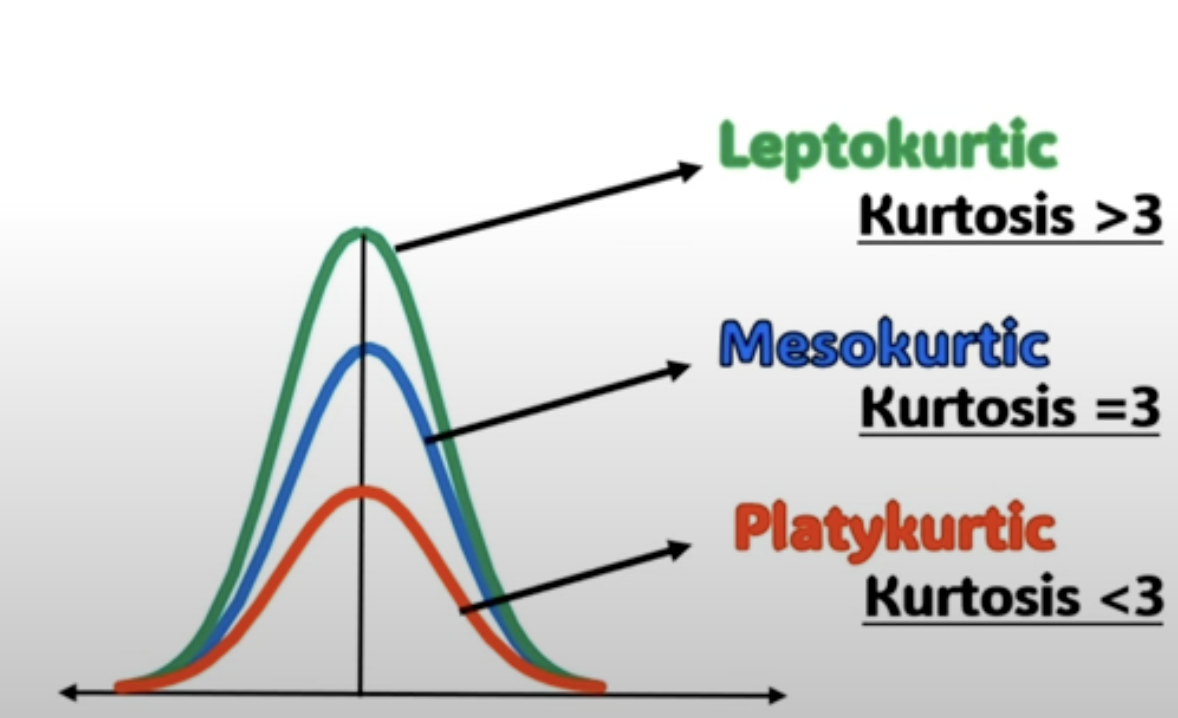Skewness & kurtosis
1/11
Earn XP
Description and Tags
Skewness & kurtosis
Name | Mastery | Learn | Test | Matching | Spaced |
|---|
No study sessions yet.
12 Terms
Skewness
measures the asymmetry of the data distribution and helps us to understand how values are spread around the mean.
describes the shape & direction of the skew (right or left)
sensitive to the changes of the tails in the distribution.
Three types of skewness
normal distribution - no skew (median=mode=mean)
left skewed - long left tail (mean in the left peak, followed by the median in middle, mode at the right peak)
right skewed - long right tail (mean in the right peak, followed by the median in middle, mode at the left peak)
left skewed
longer than the right side
mean is less than the median
mode is greater than both median and mean
negative distribution
right skewed
longer than the left side
positive distribution
mean is greater than the median, which is greater than the mode.
if the majority of the extreme values will be higher than the mean
the skewness is right, and will be positive
(we increase the mean)
if the majority of the extreme values will be lower than the mean
the skewness is left, and will be negative
(we decrease the mean)
Kurtosis
measures the peak or height of the data distribution & helps us understand the shape of frequency distribution.
measures “tailedness” of the distribution
describes the shape of the distribution´s peak & tails
sensitive to changes in the centre
Three different types of kurtosis
Mesokurtic
Platykurtic
Leptokurtic
Mesokurtic
normal distribution
Kurtosis equals 3
Platykurtic
value less than 3
the curve has a lower peak than the normal distribution/mesokurtic curve
less distributions of items around the central value/ mean
Leptokurtic
value is greater than 3
the peak is higher than the normal distribution
photo of kurtosis distributions
